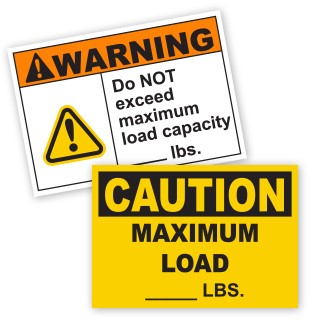Communication Tower Safety Involves Many

Communication and broadcast tower construction, service, and maintenance were, at one time, a small and highly specialized industry. The growing demand for wireless and broadcast communications in the past 30 years has spurred a dramatic increase in communication tower construction and maintenance. Electricity, metal, dangerous weather, and falls are just some of the safety factors workers must be mindful of while completing communication tower tasks. Visual communication and training tools can help assist in alerting workers of those dangers as well as offer tips for better safety against incident energy.
Employees climb towers from 100 feet to as high as 2,000 feet throughout the year, even during inclement weather conditions, to perform routine checks, maintenance, construction, and antenna or computer equipment upgrades. In 2017, OSHA responded to more than six communication tower-related fatalities. Three men died while working on a TV transmission tower in Miami.
OSHA is working with industry stakeholders to identify the causes of these injuries and fatalities. OSHA and NATE: The Communications Infrastructure Contractors Association are uniting to improve worker safety in the communications tower erection industry. For three years, the partnership will focus on ways to eliminate injuries and fatalities among workers performing wireless and telecommunications, tower erection, and maintenance operations. The partnership will address some of the industry's frequently encountered hazards.
Frequently Encountered Hazards Include:
- Falls
- Electrical hazards such as arc flash
- Hazards associated with improper rigging and hoisting personnel and equipment with base-mounted drum hoists
- Inclement weather and working during night hours
- Falling objects or "struck-by" hazards
- Equipment failure
- Structural collapse
Responsibility in communication tower employee safety has several layers. Contractors might construct a tower, then carriers often contract with vendors for installation and maintenance of equipment on the tower; those vendors might then sub-contract work on the tower. As a result, carriers and tower owners may not know who is performing work for them, or when work is being performed. Employer responsibilities of safety can be spread out. Climbers need to be prepared, but safety communication and emergency kits must be available for any person who steps on the site. OSHA requires warning signs, labels, and protection from arc flash hazards, and compliance with NFPA 70E on towers.
According to the National Association of Tower Erectors (NATE), safety at all times should be the goal of all parties in tower work. "As a climber, it's your job to be aware of the situation around you when faced with challenging conditions," host Ryan Van Duzer, a travel video journalist, says in a NATE safety video. "Be prepared both personally and with your equipment. It comes down to this: Either do it right or don't do it."
Training
Before allowing an employee to hoist employees aloft for tower work, ensure employee training. Train on the fall protection equipment used and how to safely access and depart from communication towers. The operator should understand and practice safe operation and emergency procedures. Document all trial lifts, inspections, proof tests, and pre-lift meetings, and keep the documentation on-site at a readily accessible location. Mark slippery surfaces on platforms with grip tape for added foot safety for hoisted workers. Ensure guardrails and other fall protection items are marked for visibility and communicate safe work boundaries. Post safety training tips and ensure PPE, such as arc flash harnesses and hardware, is right for each task and labeled and stored in the tower's base shelter. From the largest machine to the smallest tool, use asset tags with barcodes. A worker scans these to pull up the asset's information.
Cable Marking System
Ensure that controls are marked (or are part of a control arrangement diagram) and are easily visible from the operator's station using signs and labels. Post the personnel load capacity and a specified rated capacity of the lifting system in use on a sign at the site near the hoist operator.
 When the system changes, update the posted capacity limit. Rated load capacities, recommended operating speeds, and special hazard warnings or instructions should be on all hoists. Post the personnel load capacity in the hoist operator's view.
When the system changes, update the posted capacity limit. Rated load capacities, recommended operating speeds, and special hazard warnings or instructions should be on all hoists. Post the personnel load capacity in the hoist operator's view.
Communication Made Easy with Duralabel
Boost safety compliance on communication towers by creating custom safety signs and labels, improving hazard awareness and worker safety. Streamline messages that matter most for job hazard awareness. Duralabel' DuraLabel line of printers and supplies provide a flexible solution for most asset labeling and facility maintenance program needs. Import information directly from your database to the DuraLabel Toro. Post information where it is needed most to enable communication tower workers to perform maintenance correctly and safely every time.
Related Resources

Take Charge of Industrial Control Panel Safety
As part of industrial maintenance, most workers will have had to conduct work inside control system panels. ...
Read
Safe Distancing for Electrical Work
In a recent Facebook poll, electrical workers said that work area and arc flash boundaries were among their ...
Read
Print Electrical Safety Signs with a Thermal Transfer Printer
Why Are Electrical Safety Signs Essential for Compliance? Electrical safety is a major problem in modern ...
Read.png)





